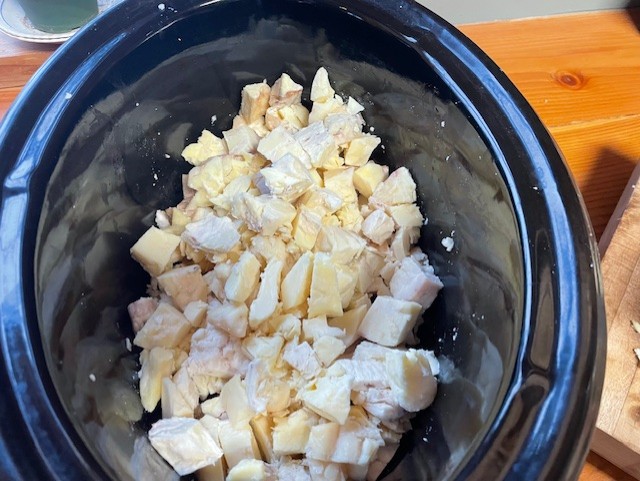Rendering Tallow
We had tallow in the freezer that we needed to use and decided to render it for cooking and soap making. We frequently render lard, but had rendered tallow only once before. The first tallow we rendered had a rather strong odor and taste, so after doing some reading, we opted to try both wet rendering and double rendering it to see if it made a difference.
Two Methods to Render Fat:
For those of you, who like I was, are unaware of the different methods of rendering, here is a basic description of the difference:
Dry Render - A method in which you put the fat directly into a pot and render it slowly over low heat.
Wet Render - A method in which you put the fat into a pot with water (and optional salt) and render it slowly over low heat. The idea is that the the fat cooks in the water (indirect heat) rather than in the pot itself (direct heat). This method is said to make the fat less likely to burn and to minimize the flavor and odor of the tallow (or lard).
Why Render Tallow or Lard:
Why would you bother rendering your own tallow or lard?
Avoid seed oils - Many people today are choosing to avoid seed oils, which current research shows to be highly inflammatory, often tainted with glyphosate, and potentially damaging to your overall health.
Know what is in your food - Raising your own animal, or having someone you trust raise an animal for you, allows you to know what has been put into the animal. Since many of the toxins animals are exposed to are stored in their fat, ensuring that an animal you will consume has minimal exposure to harmful substances through a clean diet and environment is optimal for your health as well.
Nourish your skin - Recent research suggests that tallow is biocompatible with human skin and can have beneficial effects when used in skincare products. One of the studies cited in this review suggests that emulsions with high fat content, such as those that contain tallow, provided symptomatic relief to mice with atopic dermatitis. Another showed that it decreased IgE levels and mast cells in mice with pruritis. This is promising news for those of us who have mast cell issues!
How We "Wet" Rendered Our Tallow:
1) First, we took out the beef fat and let it thaw. The pieces were very large, so once thawed, we cut it into smaller pieces. While this step takes time, the fat will render much faster when you have smaller pieces. Fortunately, it isn't at all difficult to cut through. Our chef's knife made this step of the process quite easy.
(If you are looking for a quality knife set, we love this 7 pc. Henckels Knife Set. We won it years ago in a drawing held by our local kitchen store. The knives are high quality and easy to keep sharp.)
If ordering a beef from your butcher, you can ask them to grind the fat for you. The butcher from whom we buy our pigs grinds the fat for us, which eliminates the need for this step.
 |
| Cutting the fat into smaller pieces |
 |
| The fat and water are beginning to heat |
 |
| The first rendering |




Comments
Post a Comment